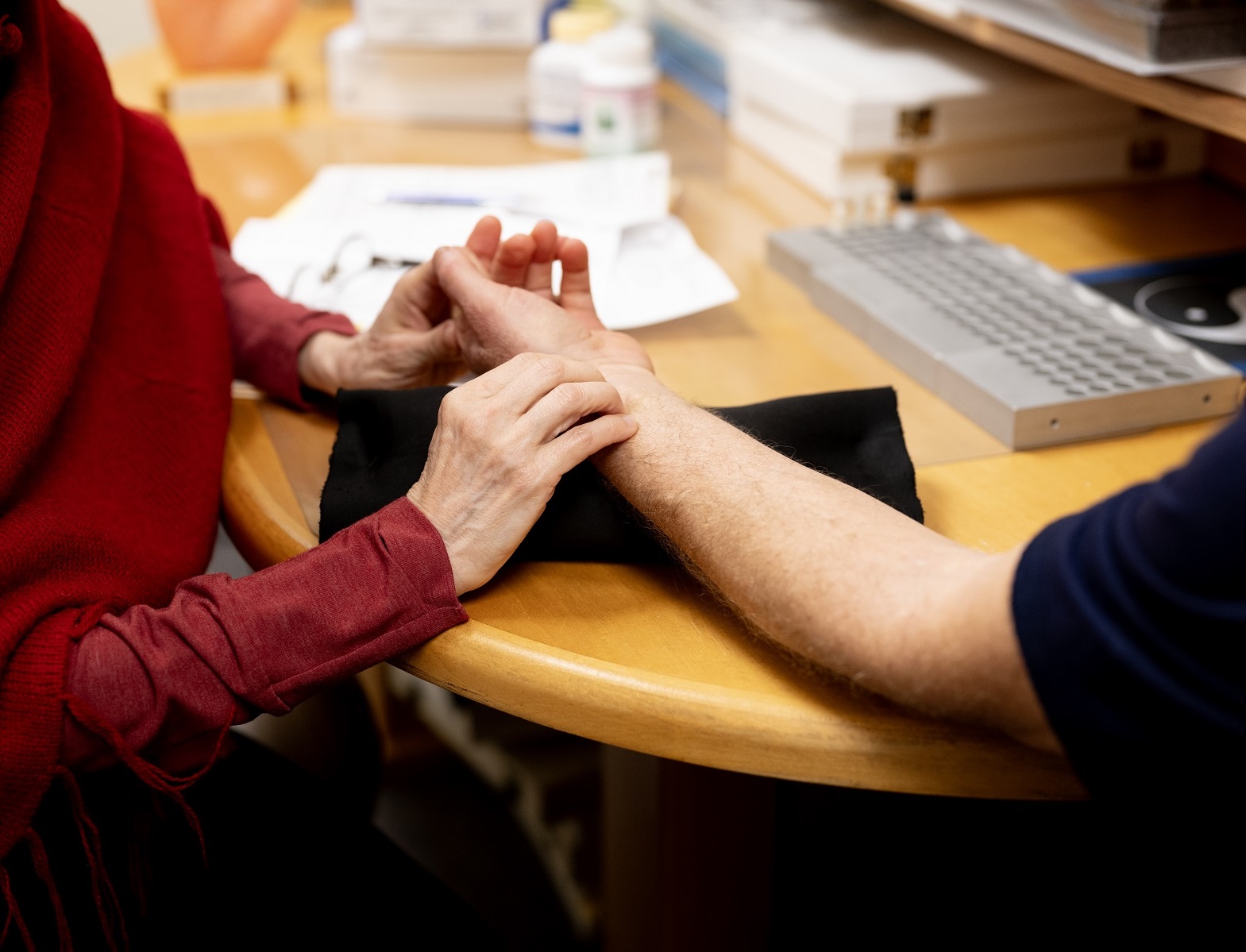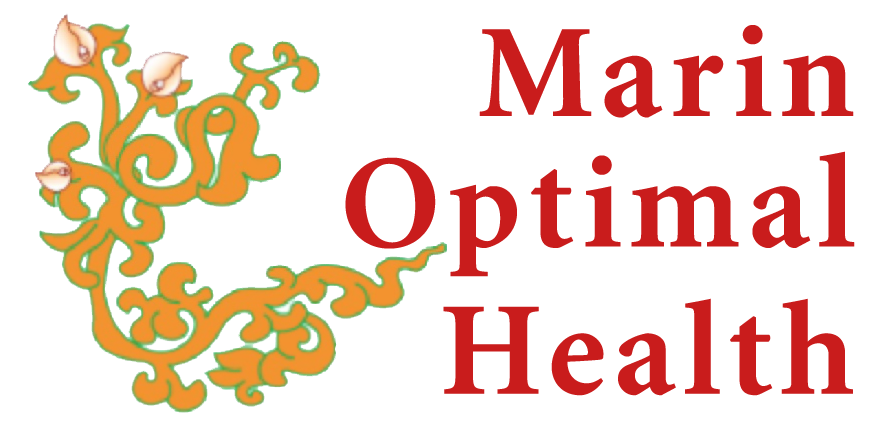Palpation (shallow and deep): I use a Japanese palpation method, developed by Kiiko Matsumoto, Lic. Ac., to acquire health information. I palpate various meridian points, reflex zones, and different areas of the body, feeling for tension, pain and weakness in any area, while getting feedback from the patient.
Pulse taking/reading: Traditional Chinese Medicine (TCM) identifies 12 different pulses related to the 12 main meridians, and the organ systems of the body. Each wrist has six pulses – three “superficial” pulses, and three “deep” pulses. A TCM practitioner feels for the quality, speed, strength/weakness and shallowness/depth of the pulse. Pulse taking/reading is a reliable early detection method as the Lung pulse will display a certain quality when you are fighting a cold or flu, even before symptoms are felt.
Viewing the tongue: In TCM, the tongue is divided into zones that reflect the condition of the major organs in the body – the lungs, heart, liver, stomach, intestines, and kidneys. Observing the tongue’s size and shape, its coating, and the sublingual veins on the underside, tells me about the condition of each organ.

Muscle testing: Muscle testing is a type of biofeedback method used to access information from the nervous system by testing the strength or weakness of muscles. I was certified in muscle testing in 1988 by John Thie, DC, founder of Touch For Health (TFH) Kinesiology Association. I’ve used muscle testing as an adjunctive diagnostic tool for over thirty-five years.
Observation: I observe and note in each patient: The condition and “look” of their eyes; the color, texture and expressions of their face); their body odors; the tone and quality of their voice; their gait, posture and body movements; and their mood and demeanor.
Palpation (shallow and deep): I use a Japanese palpation method, developed by Kiiko Matsumoto, Lic. Ac., to acquire health information. I palpate various meridian points, reflex zones, and different areas of the body, feeling for tension, pain and weakness in any area, while getting feedback from the patient.
Pulse taking/reading: Traditional Chinese Medicine (TCM) identifies 12 different pulses related to the 12 main meridians, and the organ systems of the body. Each wrist has six pulses – three “superficial” pulses, and three “deep” pulses. A TCM practitioner feels for the quality, speed, strength/weakness and shallowness/depth of the pulse. Pulse taking/reading is a reliable early detection method as the Lung pulse will display a certain quality when you are fighting a cold or flu, even before symptoms are felt.
Viewing the tongue: In TCM, the tongue is divided into zones that reflect the condition of the major organs in the body – the lungs, heart, liver, stomach, intestines, and kidneys. Observing the tongue’s size and shape, its coating, and the sublingual veins on the underside, tells me about the condition of each organ.
Muscle testing: Muscle testing is a type of biofeedback method used to access information from the nervous system by testing the strength or weakness of muscles. I was certified in muscle testing in 1988 by John Thie, DC, founder of Touch For Health (TFH) Kinesiology Association. I’ve used muscle testing as an adjunctive diagnostic tool for over thirty-five years.
Observation: I observe and note in each patient: The condition and “look” of their eyes; the color, texture and expressions of their face); their body odors; the tone and quality of their voice; their gait, posture and body movements; and their mood and demeanor.
1.415.479.2027
Marin Optimal Health
55 Professional Center Pkwy, Suite F
San Rafael, CA 94903
Marin Optimal Health
55 Professional Center Pkwy
Suite F, San Rafael, CA 94903
Policies
Policies
Marin Optimal Health is a pay-in-full at the time of your visit practice. We accept cash, check and major credit cards – MasterCard, Visa, Discover and American Express. You may also use your Flexible Spending Account (FSA) or Health Savings Account (HSA) for the visit, but not for supplements. Our fees for services and electronic insurance billing procedures are listed on the Patient Agreements & General Office Policy page. We don’t accept payments directly from insurance carriers. If your insurance covers acupuncture, we may be able to submit claims electronically for you. For this, you’ll need to provide a copy of both sides of your insurance card.
Americans with Disability Act Statement
Marin Optimal Health is committed to providing a website that is accessible to the widest possible audience, regardless of technology or ability. We are actively working to increase the accessibility and usability of our website and in doing so adhere to many of the available standards and guidelines. This website endeavors to conform to the World Wide Web Consortium (W3C) Web Content Accessibility Guidelines. Should you experience any difficulty in accessing content on our site, please let us know.

